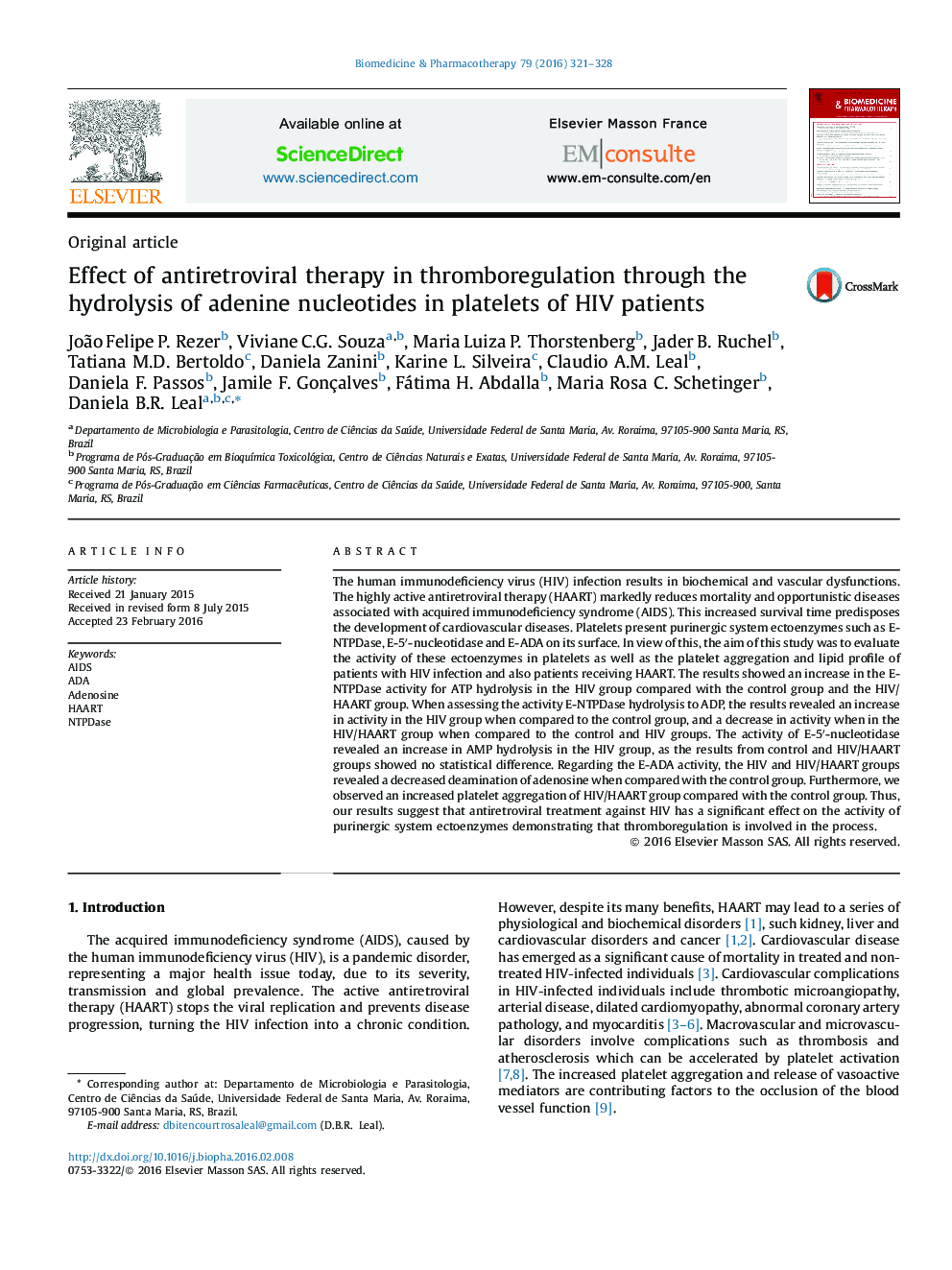| Article ID | Journal | Published Year | Pages | File Type |
|---|---|---|---|---|
| 2524822 | Biomedicine & Pharmacotherapy | 2016 | 8 Pages |
The human immunodeficiency virus (HIV) infection results in biochemical and vascular dysfunctions. The highly active antiretroviral therapy (HAART) markedly reduces mortality and opportunistic diseases associated with acquired immunodeficiency syndrome (AIDS). This increased survival time predisposes the development of cardiovascular diseases. Platelets present purinergic system ectoenzymes such as E-NTPDase, E-5′-nucleotidase and E-ADA on its surface. In view of this, the aim of this study was to evaluate the activity of these ectoenzymes in platelets as well as the platelet aggregation and lipid profile of patients with HIV infection and also patients receiving HAART. The results showed an increase in the E-NTPDase activity for ATP hydrolysis in the HIV group compared with the control group and the HIV/HAART group. When assessing the activity E-NTPDase hydrolysis to ADP, the results revealed an increase in activity in the HIV group when compared to the control group, and a decrease in activity when in the HIV/HAART group when compared to the control and HIV groups. The activity of E-5′-nucleotidase revealed an increase in AMP hydrolysis in the HIV group, as the results from control and HIV/HAART groups showed no statistical difference. Regarding the E-ADA activity, the HIV and HIV/HAART groups revealed a decreased deamination of adenosine when compared with the control group. Furthermore, we observed an increased platelet aggregation of HIV/HAART group compared with the control group. Thus, our results suggest that antiretroviral treatment against HIV has a significant effect on the activity of purinergic system ectoenzymes demonstrating that thromboregulation is involved in the process.
Graphical abstractGroup untreated HIV: The figure shows an increase in total cholesterol and these patients an increase in activity of the enzyme E-5′-nucleotidase, indicating that the hydrolysis of nucleotide AMP is high. E-ADA activity is decreased indicating that the nucleoside adenosine (Ado) is being accumulated in the extracellular medium for their cardioprotective effects and vasodilators are acting and/or neutralizing the damage caused by HIV.HIV HAART group: The figure shows an increase in LDL cholesterol and triglycerides. E-NTPDase activity is reduced to ADP hydrolysis indicating that the nucleotide could be in increased levels in the extracellular medium also increasing the platelet aggregation, as an agonist. Since the E-ADA activity is decreased in order to maintain inventory adenosine (Ado) in the extracellular medium which is to play its role cardioprotector against cardiovascular risk generated by increased LDL cholesterol, triglycerides and platelet aggregation.Figure optionsDownload full-size imageDownload as PowerPoint slide
